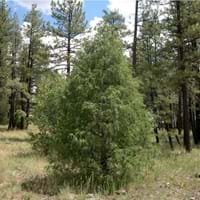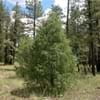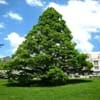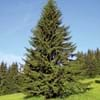Life Span
Perennial
Perennial
Type
Needled or Scaled Evergreen
Aquatics
Origin
North America
Northeastern United States, Mid-Atlantic United States, Southeastern United States, North-Central United States, Central United States, South-Central United States, Canada
Types
Not available
Not Available
Habitat
Deciduous forests, Rocky areas, rocky outcrops
Moist Soils, Terrestrial, Upland, Wet lands
USDA Hardiness Zone
3-7
3-11
Sunset Zone
1a, 1b, 2a, 2b, 3a, 3b, 4, 5, 6, 7, 8, 9, 10, 11, 12, 13, 14, 15, 16, 17, 18, 19, 20, 21, 22, 23, 24
21,22
Habit
Narrow Upright/Fastigiate
Thicket/Colonizing
Flower Color
Not Available
White
Flower Color Modifier
Bicolor
Not Available
Fruit Color
Not Available
Brownish Red
Leaf Color in Spring
Blue Green
Green, Dark Green
Leaf Color in Summer
Not Available
Green, Dark Green
Leaf Color in Fall
Blue Green
Green, Dark Green
Leaf Color in Winter
Blue Green
Not Available
Leaf Shape
Scale-like imbricate
Heart-shaped
Plant Season
Spring, Summer, Fall, Winter
Spring, Summer, Fall
Sunlight
Full Sun, Partial Sun
Full Sun, Partial Sun, Partial shade
Type of Soil
Clay, Loam
Loam
The pH of Soil
Acidic, Neutral, Alkaline
Acidic, Neutral
Soil Drainage
Well drained
Average
Bloom Time
Early Spring, Late Winter, Mid Spring
Summer
Tolerances
Drought
Wet Site
Where to Plant?
Container, Ground, Pot
Container, Ground, Pot
How to Plant?
Cuttings, Seedlings
From Rhizomes, Root Division
Plant Maintenance
Medium
Medium
Watering Requirements
Does not require water in summer, Keep the Soil well drained, Medium
Needs Very high moisture
In Summer
Lots of watering
Lots of watering
In Spring
Moderate
Moderate
In Winter
Average Water
Average Water
Soil pH
Acidic, Neutral, Alkaline
Acidic, Neutral
Soil Type
Clay, Loam
Loam
Soil Drainage Capacity
Well drained
Average
Sun Exposure
Full Sun, Partial Sun
Full Sun, Partial Sun, Partial shade
Pruning
Remove damaged leaves, Remove dead branches, Remove dead leaves
Remove damaged leaves, Remove dead branches, Remove dead leaves
Fertilizers
All-Purpose Liquid Fertilizer
All-Purpose Liquid Fertilizer
Pests and Diseases
Red blotch
bees
Plant Tolerance
Drought
Drought
Flowers
Insignificant
Showy
Flower Petal Number
Single
Single
Foliage Texture
Medium
Medium
Foliage Sheen
Matte
Matte
Attracts
Flying insects, Hummingbirds
Bees, Flies
Allergy
Not Available
allergic reaction, Pollen
Aesthetic Uses
Bonsai, Hanging Basket, Showy Purposes, Used for decorating walls, fences, gates, hedges, etc.
Bog Garden, Showy Purposes, Water gardening, Wild gardens
Beauty Benefits
Not Available
Not Available
Environmental Uses
Air purification
Air purification
Medicinal Uses
Appetizer, Diaphoretic, Disinfectant, Diuretic, Hemostatic, Laxative, Sedative, Tonic
Insect Bites, Treating fever
Part of Plant Used
Fruits, Leaves, Shoots
Flowers, Leaves, Root
Other Uses
Air freshner, Pesticide, Repellent, Shelterbelt, Showy Purposes, Wax, Wood is used in construction
Grown in botanical gardens as a specimen, Used as Ornamental plant
Used As Indoor Plant
No
Sometimes
Used As Outdoor Plant
Yes
Yes
Garden Design
Container, Edging, Feature Plant, Foundation, Groundcover, Hedges, Mixed Border, Topiary, Bonsai, Espalier
Container, Water Gardens, Wildflower
Botanical Name
JUNIPERUS scopulorum 'Skyrocket'
SAURURUS cernuus
Common Name
Skyrocket Juniper
Lizard's Tail
In Hindi
skyrocket juniper
Saururus cernuus
In German
die Höhe schnellen Wacholder
Saururus cernuus
In French
monter en flèche genévrier
Saururus cernuus
In Spanish
dispararse enebro
cernuus Saururus
In Greek
ανεβάσει στα ύψη αρκεύθου
Saururus cernuus
In Portuguese
foguete zimbro
Saururus cernuus
In Polish
jałowiec Skyrocket
Saururus cernuus
In Latin
skyrocket iuniperorum
Saururi cernuus
Phylum
Pinophyta
Tracheophyta
Class
Pinopsida
Magnoliopsida
Family
Cupressaceae
Saururaceae
Clade
Not Available
Angiosperms, Magnoliids
Tribe
Not Available
Not Available
Subfamily
Cupressoideae
Not Available
Number of Species
Not Available
Importance of Skyrocket Juniper and Saururus cernuus
Want to have the most appropriate plant for your garden? You might want to know the importance of Skyrocket Juniper and Saururus cernuus. Basically, these two plants vary in many aspects. Compare Skyrocket Juniper and Saururus cernuus as they differ in many characteristics such as their life, care, benefits, facts, etc. Every gardener must at least have the slightest clue about the plants he wants to plant in his garden. Compare their benefits, which differ in many ways like facts and uses. The medicinal use of Skyrocket Juniper is Appetizer, Diaphoretic, Disinfectant, Diuretic, Hemostatic, Laxative, Sedative and Tonic whereas of Saururus cernuus is Insect Bites and Treating fever. Skyrocket Juniper has beauty benefits as follows: Not Available while Saururus cernuus has beauty benefits as follows: Not Available.
Compare Facts of Skyrocket Juniper vs Saururus cernuus
How to choose the best garden plant for your garden depending upon its facts? Here garden plant comparison will help you to solve this query. Compare the facts of Skyrocket Juniper vs Saururus cernuus and know which one to choose. As garden plants have benefits and other uses, allergy is also a major drawback of plants for some people. Allergic reactions of Skyrocket Juniper are Not Available whereas of Saururus cernuus have allergic reaction and Pollen respectively. Having a fruit bearing plant in your garden can be a plus point of your garden. Skyrocket Juniper has no showy fruits and Saururus cernuus has no showy fruits. Also Skyrocket Juniper is not flowering and Saururus cernuus is not flowering . You can compare Skyrocket Juniper and Saururus cernuus facts and facts of other plants too.





